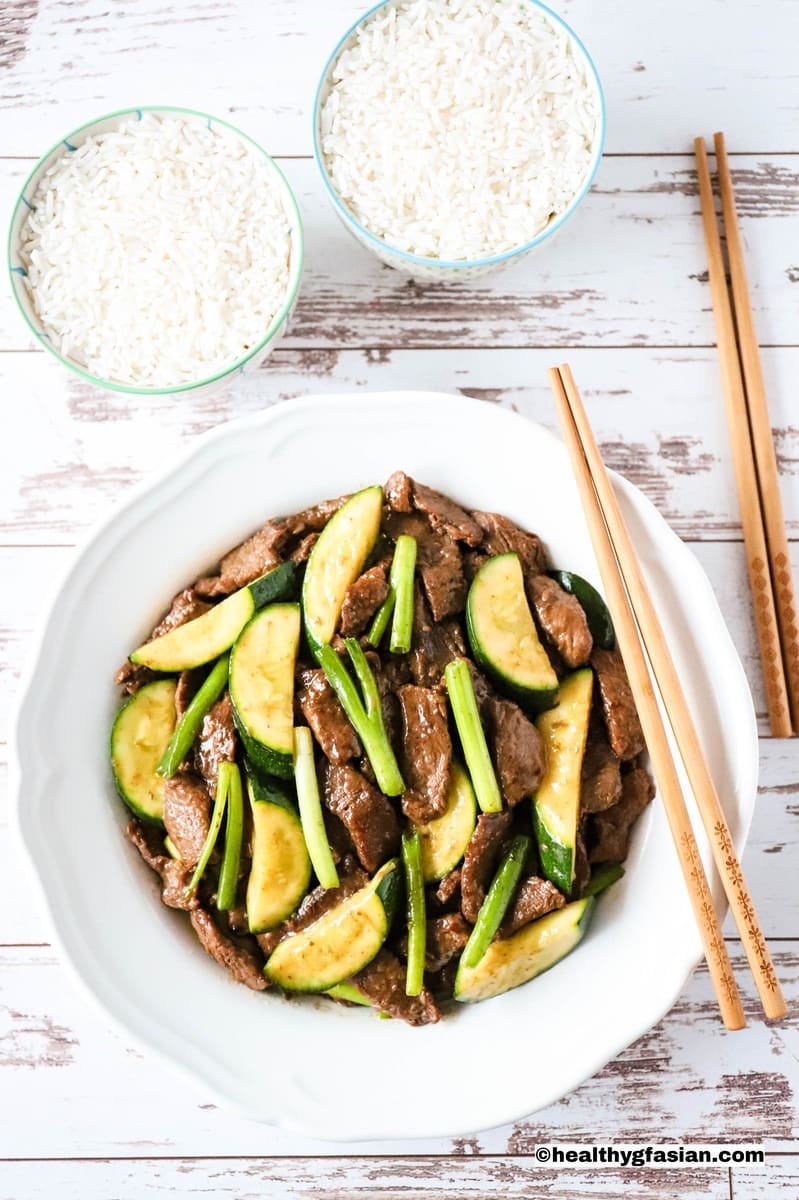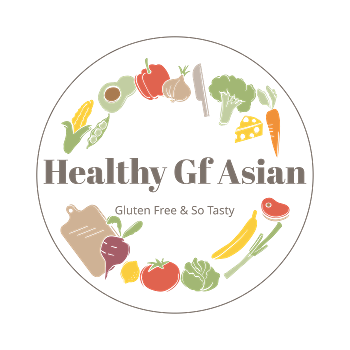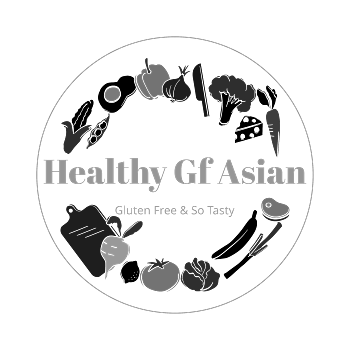For my gluten free mongolian beef with zucchini, I used ingredients like thinly sliced beef rump steak. Plus spring onion (scallions), zucchini, ginger and garlic. Then stir fried in a tasty brown sauce. Consisting of blackstrap molasses, coconut amino sauce (coconut aminos), medium dry sherry and thickened with potato starch mixture. This gluten free mongolian beef with zucchini recipe is not only gluten free. But also low carb, soy free, corn free, dairy free, egg free, nut free, refined sugar free and allergy friendly. My mongolian beef with zucchini is also paleo without the steamed rice. If you are on a paleo diet, serve this Mongolian beef with zucchini with Cauliflower Rice instead.
Many people consider Mongolian Beef as the most popular Chinese restaurant take out dish in Australia and the United States. Chef traditionally prepare Mongolian beef using beef slices. Stir-fried with spring onion (scallions), ginger and garlic, in a savoury and pungent brown sauce. They make the sauce with soy sauce, rice wine, and thickened with corn starch mixture. Sometimes, they will add capsicums (bell peppers), brown sugar, hoisin sauce or oyster sauce to Mongolian beef as ingredients.
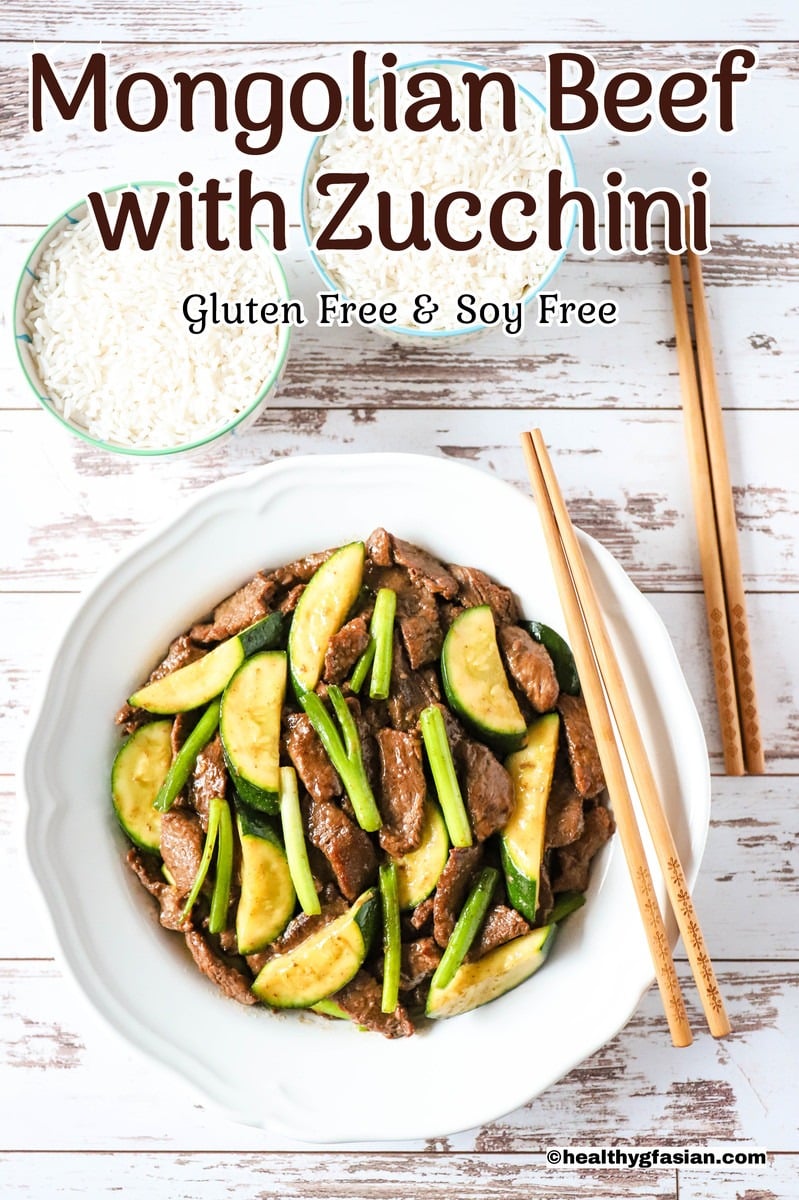
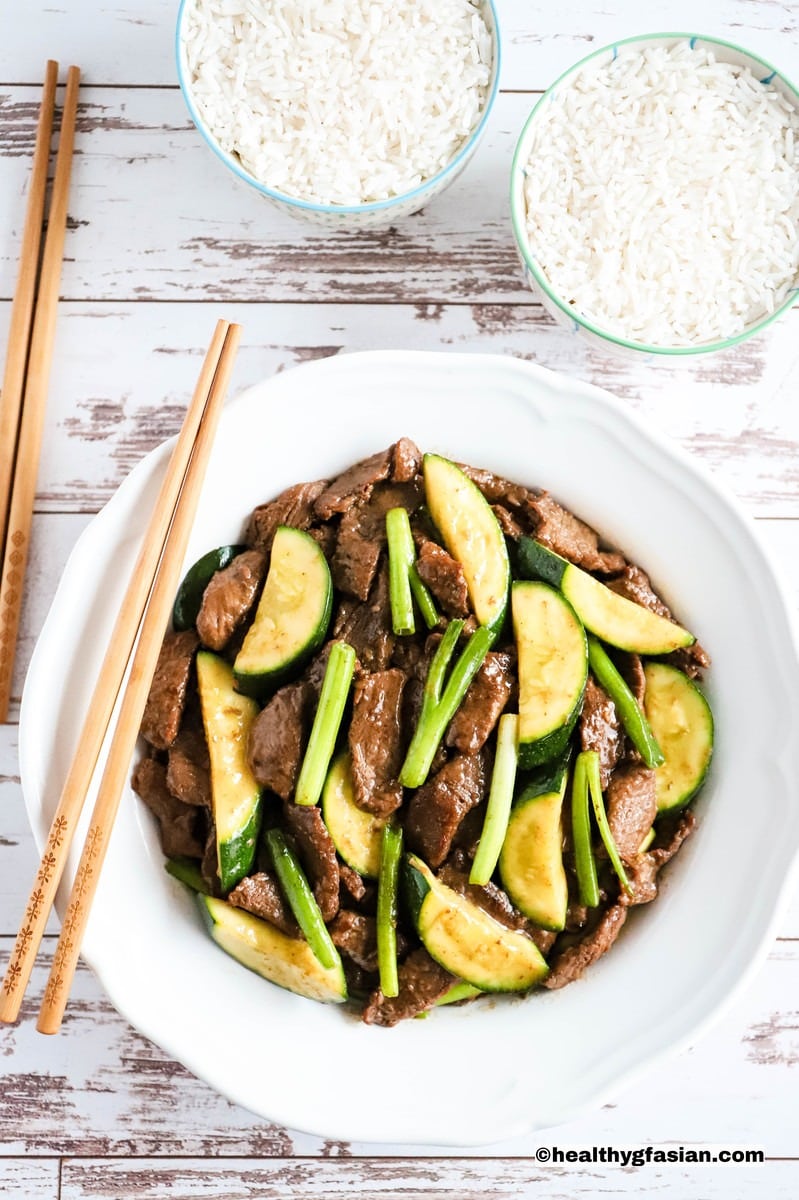
Origin of Mongolian Beef?
Regardless of the name of this dish, Mongolian beef did not originate from Mongolia. In fact, they created Mongolian beef Taiwan. They have adapted Mongolian beef from Mongolian barbecue restaurants. Whereby, they serve a meat and vegetable dish stir fried on a hot iron griddle at really high temperature. Equally, Taiwanese chefs invented the Mongolian beef and Mongolian barbecue dishes. And they have no associations with Mongolian cuisine at all.
What is Coconut Aminos?
Many people often use coconut aminos or coconut amino sauce as a healthier alternative to soy sauce. They mainly replace it in Asian dishes. Consequently, they made coconut aminos with coconut nectar or sap. Then aged by naturally fermenting it with added sea salt. Coconut aminos is not only a healthier replacement condiment with 70% less sodium and sweeter than standard soy sauce. It is also low calorie, low glycemic and allergy friendly. In addition, it is gluten free, soy free, non-GMO, paleo, kosher, vegan, certified organic and MSG free.
Furthermore, coconut aminos has a nice balance of sweet, savoury, rich, buttery flavour. Typically, they use coconut aminos in stir fries, stews, braises, casserole, dressings, dipping sauce and marinade. Additionally, they usually use coconut nectar or sap to make a mixture of foodstuff. For example, syrup, sugar, vinegar and other sauces in Southeast Asia. You can buy coconut aminos in health food stores or online stores. You need to store the coconut aminos in the fridge once you open the bottle.
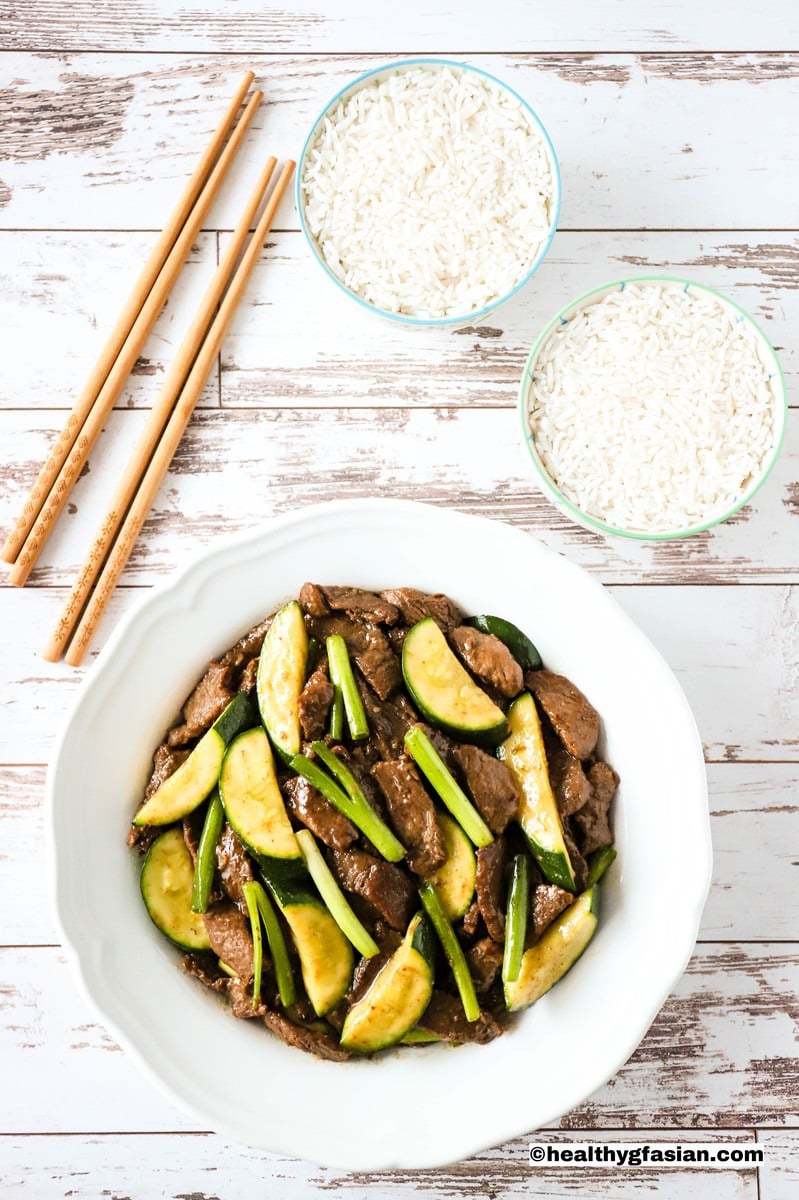
History of Zucchini
Zucchini or courgette (Cucurbita pepo) is a summer squash that belongs to the gourd family, Cucurbitaceae. Just like all squash and pumpkin. Farmers usually harvest immature zucchini with soft and tender edible skin before their rinds harden. Just like pumpkin and butternut squash, winter squash that have hard and inedible skin. Zucchini skin is most commonly dark green but can also come in light green. Moreover, a related hybrid, the golden zucchini can be orange or deep yellow in colour.
Eventhough, botanically they consider zucchini as fruits. Because they came from a flowering plant, chefs consider them as a vegetable in the culinary world. We refer to them as botanical berry named “pepo”, meaning the enlarged ovary of the zucchini flower. The historical squash originated from Central and South Americas more than 7,000 years ago. While they cultivated the modern day variety of the zucchini initially in Italy during the 19th century. Subsequently introduced into the United States in the 1920s by European immigrants.
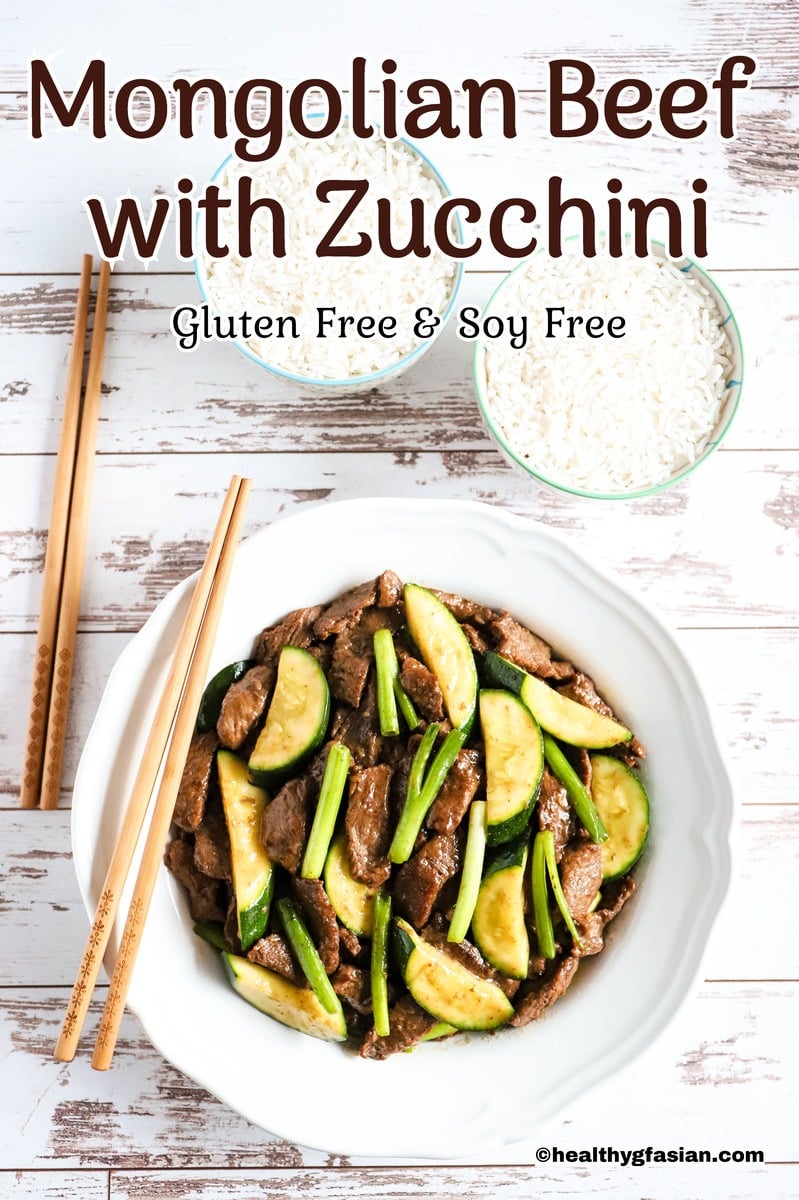
Zucchini as food
Today, they regard zucchini as a regular well liked summer vegetable worldwide. Mainly due to the fact that it is not expensive and widely available all year round. Most important is its gastronomic versatility. We use zucchini not only as a regular vegetable side dish. We can also shred them and include into bread, pastry and desserts like cakes, muffins and soufflé. The easiest way to savour zucchini is to eat it as a snack. Or cut it into sticks or slices and paired with a dipping sauce or hummus.
Frequently, we add zucchini raw to salads as well as steam, boil, grill, stuff, barbeque, pan fry or deep fry. Alternatively, we can add to Asian stir fried dishes, the options are endless. In addition, we can add zucchini into pasta or noodle dishes. Or make zucchini into noodles like spirals with a vegetable slicer or spiralizer, often referred to as “zoodles”. As a healthy low carb vegetable alternative for pasta or noodle. Furthermore, we can utilize zucchini blossom or flowers as they are edible. We can be stuff them, use them as pizza topping. Otherwise, we can make them fried Japanese tempura style, added to soups and as a fillings for tortilla or quesadillas.
When you buy fresh zucchini from the market. Look for the ones that are shiny and smooth. With firm skin that has no cuts and bruises plus bright colour skin. Store zucchini in plastic bags in the fridge for later use.
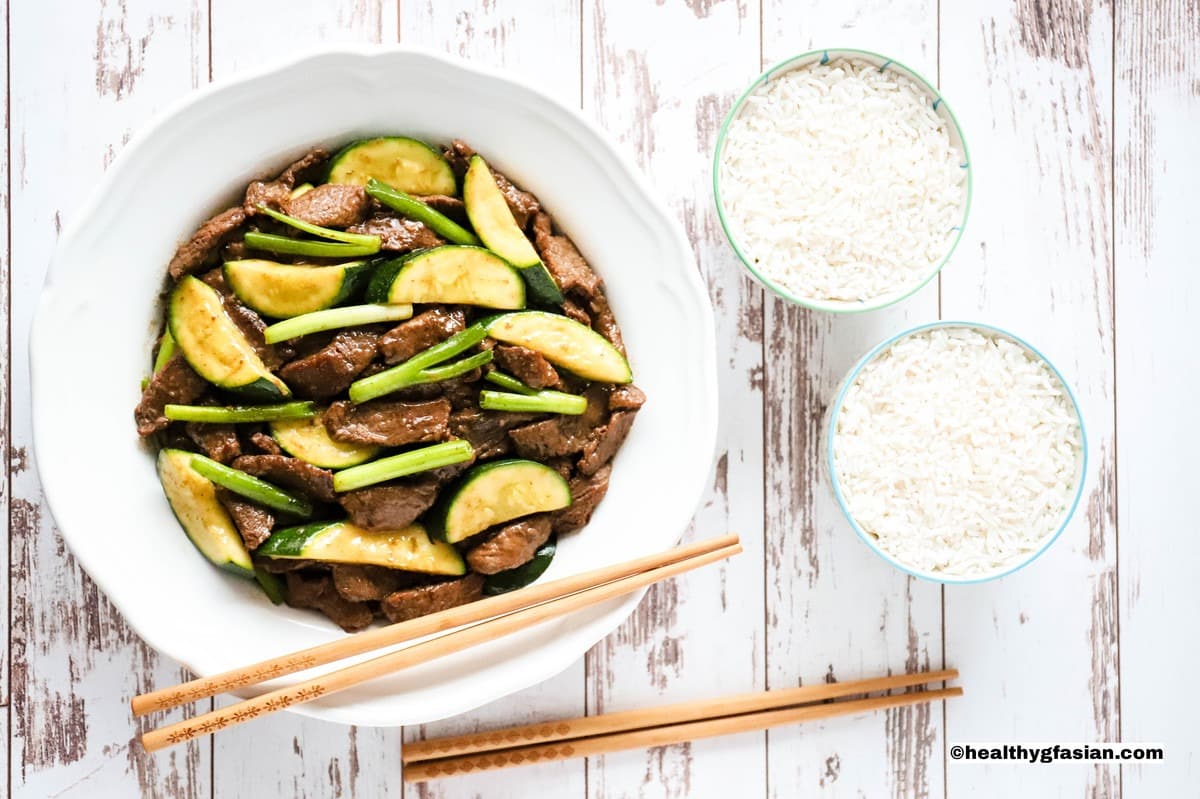
Nutritional Values of Zucchini
This fresh summer vegetable is not only tasty and an extremely versatile cooking ingredient. Zucchini also has a lot of nutritional values and health benefits. Zucchini is high in water content, has zero fat, and low in calorie. It is also a good source of plant protein, dietary fiber, vitamins and essential minerals. Zucchini is rich in vitamin C, vitamin B2 (riboflavin), vitamin B6, folate, (vitamin B9), vitamin K, manganese and potassium. It is also a decent source of vitamin A, vitamin B1 (thiamine), vitamin B3 (niacin), copper, magnesium and phosphorus.
Moreover, zucchini also has certain amount of vitamin E, vitamin B5 (pantothenic acid), choline, calcium, iron, zinc and selenium. Similarly, zucchini contains antioxidant and anti-inflammatory phytonutrients. They are especially rich in carotenoids like beta carotene, lutein and zeaxanthin, mainly found in the zucchini skin.
Health Benefits of Zucchini
On the whole, the health benefits of zucchini include:
- Promote a healthy digestive system;
- Support healthy eyes and skin;
- Maintain healthy blood sugar level;
- Aid in weight loss management;
- Reduce risks of cardiovascular diseases;
- Boosts the immune system;
- Maintain healthy bones;
- Help maintain thyroid and adrenal glands functions; and
- May prevent certain cancer like prostate cancer.
For nutritional values and health benefits of beef rump steak. Refer to my Braised Beef with Shiitake Mushrooms and Black Fungus recipe.
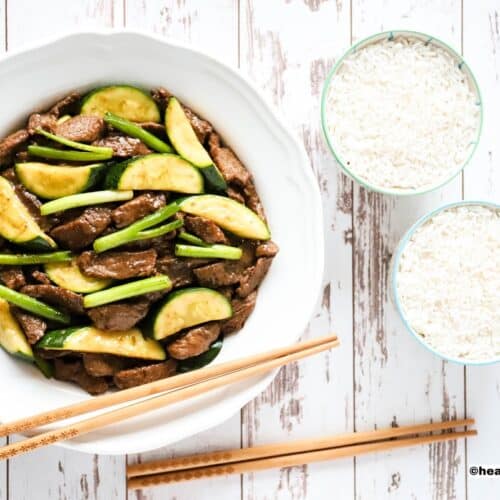
Mongolian Beef with Zucchini
Ingredients
- 8 tablespoons extra virgin olive oil
- 1 kg beef rump steak trimmed and thinly sliced against the grain
- 3 garlic cloves peeled and finely minced
- 5 cm ginger peeled and finely grated
- 2 medium zucchini halved and sliced into 1 cm thickness crosswise
- 3 spring onions shallots, sliced into 4cm lengthwise (white and green parts)
- 2 tablespoons medium dry sherry
- Steamed rice to serve
For the Sauce:
- ⅓ cup blackstrap molasses
- ¼ cup coconut aminos also called coconut amino sauce
- ¼ cup medium dry sherry
- 2 teaspoons salt
- 2 teaspoons potato starch mixed with ½ cup water
For the Marinade:
- 2 teaspoons potato starch
- ¼ teaspoon ground white pepper
- 2 tablespoons medium dry sherry
Instructions
- Combine the beef pieces with the marinade in a large bowl and mix well.
- Prepare and mix the sauce ingredients except the potato starch mixture in a separate bowl. Set aside.
- Heat up a non-stick wok with 4 tablespoons of extra virgin olive oil, pan-fry the beef on medium heat for 2 minutes on each side or until browned. Remove beef and set aside. Clean wok with kitchen paper towel.
- Add another 4 tablespoons of oil to the non-stick wok, then add garlic and ginger, stir-fry until lightly golden on low heat.
- Add all the zucchini and medium dry sherry and stir-fry for 1 minute on high heat.
- Return the beef to the non-stick wok and stir-fry for another 2 minutes on high heat.
- Then add the sauce mixture prepared in step 3 and stir-fry for 2 minutes on high heat. Then add the potato starch mixture and bring to a boil. Continue to stir-fry until the sauce thickens and the dish is heated through.
- Lastly, add in the spring onion (scallions), briefly stir and mix well and turn off the heat.
- Serve immediately with rice.
Recommended Products
Notes
